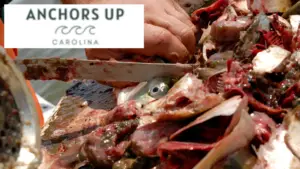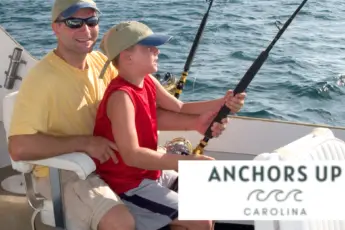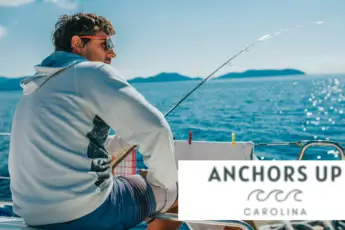Chumming is one of the most effective ways to draw fish towards the boat. Without question, chumming is effective when fishing offshore and inshore but is most widely used offshore. I have used blocks of chum countless times throughout the East Coast of the United States and the Bahamas. Chumming must be done properly to maximize results. First, you need to avoid overfeeding fish; second, you’ll want to avoid underfeeding. Here is what you need to know about chumming for fish.
What Is Contained In Chum Blocks
When chumming, most of the blocks include shrimp, squid, oils, pogy, bunker, menhaden, oats, clams, and crabs. The combination of the ingredients creates a pathway of food from the surface to the seafloor.
However, not all anglers purchase chum in pre-frozen blocks. Instead, anglers will elect to make blocks by grinding freshly caught and freeing into cubes. Either will do the trick. The drawback to homemade blocks is the time required to grind and form.
Without a doubt, bottom dwelling fish, including snapper, and grouper, will become elevated in the water column. The targeted gamefish move closer to the surface, following the chum and oil slick.
How Many Blocks Of Chum Are Required For A Day Of Fishing
Unfortunately, chumming requires purchasing more than one box per trip. One block for up to two hours, but that is highly dependent on the water temperature. When the water is warm, expect a block to go at a rate of one per hour.
Undoubtedly, chumming becomes expensive when combined with bait, fuel, equipment, and more.
When planning, I suggest purchasing a minimum of 4 blocks of chum for eight hours of fishing.
What Size Chum Bag Is Best For Chumming
Determining the correct bag for chumming is challenging. The bags openings between stitching vary therefore you must select the size that is correct based on a multitude of factors. Below are factors to better determine what bag to choose.
Depth You Are Fishing
Without question, you will want to select the proper chum bag based on the depth of the water you are fishing.
Importantly, the deeper the water the larger the chucks required to reach the seafloor below. With that being said, a larger opening bag such as a ⅝” is ideal. However, understand that the block will dissolve at a more rapid rate compared to a smaller holed mesh bag.
Conversely, if you’re fishing in shallow water less than 50 feet, I suggest a ⅜” mesh bag. The block will last for an extended period in comparison as smaller pieces will flow through the mesh openings.
Water Temperature
As mentioned above, water temperature determines how quickly a block of chum will thaw and become dispersed.
I recommend a wider opening chum bag when water temperatures are at or below 60 degrees. The block will take substantially longer to thaw under these conditions. A small opening bag will not disperse the chum quickly enough to draw fish up and away from the bottom.
However, when temperatures push above 60 degrees the blocks will thaw at a rapid rate. Again, when fishing in water shallower than 50 feet, I suggest a ⅜” opening bag.
How To Store Chum Blocks On The Boat
Look, you don’t want to arrive at your fishing destination with melted boxes of chum. The mixture once melted will need to be scooped into the water at regular intervals compared to being placed in a bag.
For this reason, you will need to keep the blocks completely frozen. In order to do so, either place the blocks in an onboard freezer or cover them with ice in a high quality cooler.
All too often, I have seen anglers toss the chum block boxes into the water once they are loaded in the bag. Don’t throw the boxes in the water instead place them in a garbage bag and dispose of them at the dock.
Stop Chumming And Move When The Sharks Show Up
Sharks, often known as the tax man, are likely to show up in the chum slick as a result of scent and activity.
Unfortunately, you will soon be reeling up half of a fish compared to a whole fish. The sharks take it upon themselves to dine on what was supposed to be your dinner.
Importantly, you will want to pick up and move when the sharks arrive. Repeat the process until you’re satisfied with the number of fish in the cooler or have reached the allowable limit.
Chum For Fish The Next Time You’re Offshore
The next time you head out fishing on a reef or elsewhere make sure to adjust properly based on the conditions. Without a doubt, chumming up fish increases the success rate of catching target species. I have loaded the ice box on multiple occasions. Use the tool to your advantage compared to dropping down weights blindly in hopes of catching grouper, snapper, and more.







